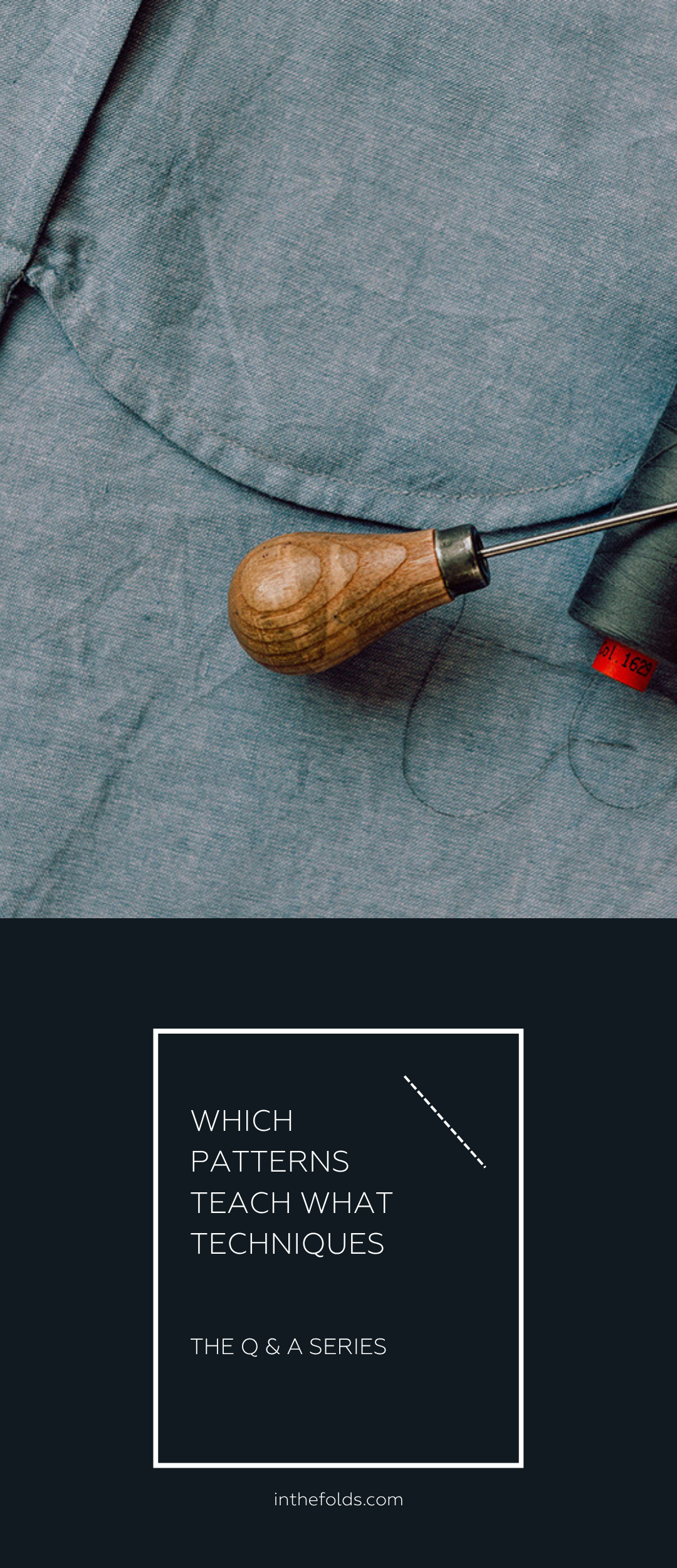Hello!
I’m wondering if you could answer a question for me? I’m currently making the Peppermint Ruffle Sleeve top (beginner sewer!) and am not sure if I need to mark the seam allowances on my fabric before removing the pattern pieces?! I’m not quite sure how to do that through the paper? Or know if it’s necessary?! Any advice would be much appreciated!
Many thanks,
Sophie
Some exciting news
Before I get started answering this week's question, I just wanted to know that we have some exciting news here at In the Folds. I now have a very talented and amazing assistant that works with me one day a week.
Alys is a patternmaker with a tonne of experience and is also a sewing teacher (check out her business here if you are in Sydney and interested in sewing or patternmaking classes). So basically the most perfect person for the job! She has been assisting me with all aspects of the business since she got started and will now be helping me tackle some of the questions that have been submitted by the community. Over to you Alys!
Hi Sophie,
Great question!
You don’t need to draw the seam allowance onto each pattern, however it is important to know what the seam allowance should be and a method to keep your stitching at the right distance from the edge!
HOW TO USE A SEWING MACHINE AS A GUIDE FOR SEAM ALLOWANCE
One of the quickest ways to make sure you're sewing the right seam allowance is to use your machine as a guide to know how wide you are stitching.
Have a look on your machine, underneath the needle. Machines are often marked with engraved or drawn lines, these can be used as a guide to stitch a certain seam allowance. Align the edge of the fabric to the appropriate line on the machine. If you are unsure of the distance, use a tape measure and measure the distance from your needle to the line.
Make sure to keep checking the edge of the fabric against the guide parallel to where the needle is stitching.
If you have an old sewing machine, you can stick on some masking tape and mark guidelines on the tape.
SEAM ALLOWANCE ON PATTERNS
In the folds patterns always have the seam allowance marked onto each pattern in a light grey. We also explain at each section, in the sewing instructions, the amount of seam allowance to sew. Other patterns companies may write on the pattern and instructions what the general seam allowance is and won’t mark the seam allowance on the pattern.
It is always a good idea to check that the pattern you are using has seam allowance included and to know what the seam allowance is for each seam.
WHY THERE ARE DIFFERENT SEAM ALLOWANCES
Sometimes you’ll come across - ‘Xcm seam allowance unless indicated / marked otherwise.’ In these situations, it will usually be explained in the sewing instructions when the seam allowance varies. Depending on the area of the pattern you are sewing, it is often useful to have a smaller or larger seam allowance.
For curves there is often a smaller seam allowance, to allow for the seam allowance to sit flatter and therefore create a smoother appearance once it is sewn.
When you are turning pieces inside out, a small seam allowance may be used to avoid bulk and again create a smoother finish.
Different seams require different seam allowances to help you sew them. For example flat fell and french seam require you to do 2 steps whilst sewing and the seam allowance determines how wide the finished seam or topstitching is.
Different fabrics may require a variation - if a fabric is likely to fray you may want to allow more seam allowance.
For alterations - often in tailored pieces they allow extra seam allowance for future alterations.
WAYS TO MARK SEAM ALLOWANCE
If you do want to mark the seam allowance there are a few techniques you can use -
Cut notches (this is a small snip into the edge of the fabric) on your stitch line. Make sure your snips are less than 5mm long so they are not visible from the outside.
Use chalk and a ruler to draw on the stitch line. You can also use a pattern master which has a guide for varying widths.
Erasable pens - pens such as Frixion allow you to draw onto the fabric and then the marks disappear with steam. Again using a ruler or pattern master will help with this method.
If you’d like to hear more about different methods - Love to Sew podcast have recently released a great episode about all things marking tools - check it out here!
I hope this helps, enjoy the start of your sewing journey!
Happy sewing,
Alys
resources mentioned in this issue
Love to Sew podcast on marking tools - listen to it here.
P.S. Would you like to know what the Q & A series is all about? This page tells you a little bit more about the motive behind the series. Past issues from the Q & A series can be found here.
Don't have a question, but found this newsletter helpful? I'd love to hear from you! Get in touch and say hi.
What you’ve been making
Rushcutter dress made by @sewdiypatterns
Rushcutter dress made by @apple_franca
Peppermint peplum top made by @newcrafthouse
Collins top made by @ci424












